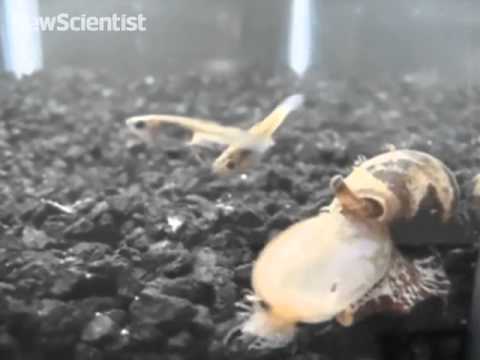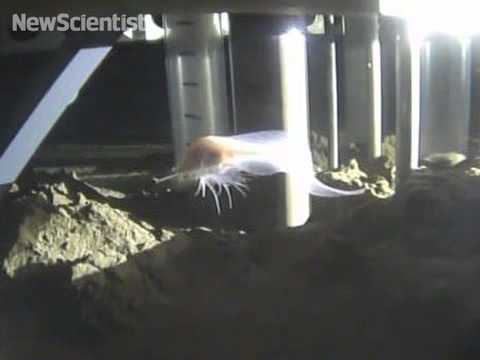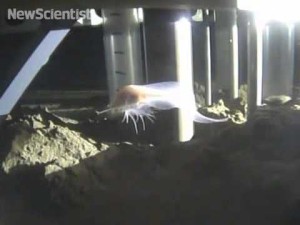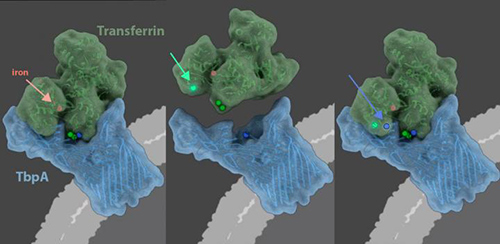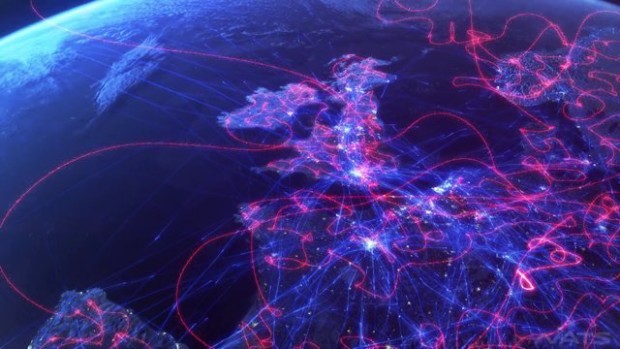It’s a murder plot played out both in fiction and real life. But now the first known case of murder using insulin has been seen in the natural world, and in a humble mollusc no less.
Cone snails are master hunters, carrying a cocktail of neurotoxins. Most have a lightning fast venomous dart that snags and paralyses unsuspecting fish. But some use their stretchy mouths to slowly capture and eat fish whole. Given how much quicker a fish is, you might wonder how the snails manage to do this.
It now seems the fish don’t put up a fight against the engulfing mouth because they have hypoglycaemic shock. Cone snails that use this technique – Conus geographus and Conus tulipa – spray a cocktail of toxins including an unusual type of insulin into the water to confuse and weaken the fish, letting them eat them whole.
Insulin is a hormone used throughout the animal kingdom to remove excess glucose from blood. But if you have too much insulin, your glucose levels drop and you become disoriented, confused and you can eventually lose consciousness and die.
The cone snails appear to subvert insulin’s normal physiological role to use it as an offensive weapon.
Although insulin has been used in dozens of real, and fictional, murders nobody has seen it used as a venom in the natural world.
So when Helena Safavi-Hemami from the University of Utah in Salt Lake City and her colleagues found that some cone snails produce insulin in their venom, they were taken aback. “It was very surprising to us since it had never been shown before and people have worked on animal venoms for decades,” says Safavi-Hemami.
The team delved further and found genes that produce the insulin are expressed at high levels on the tip of the venom gland. Last year, Richard Lewis from the University in Queensland in Australia showed that part of the gland is used to spray venom into the water.
Safavi-Hemami’s team also found that the insulin produced by the cone snails for use on fish is different from the one it uses to manage its own sugar levels. For one thing it’s the smallest insulin molecule ever seen. For another, it is much more like insulin used by fish than that seen in molluscs.
When the team injected it into zebrafish, it elicited hypoglycaemic shock. When they added it to water in which the fish swam, the fish immediately became sluggish, moving around much less than normal.
The small size of the weaponised insulin molecule could explain how it works so fast, says Safavi-Hemami.
And if the weaponised insulin is unusually fast-acting or potent, she says, it could help researchers understand how small changes in insulin molecules affect their function, and potentially lead to better treatments for diabetes.
The team is now analysing the genes in the cone snail that code for the insulin to figure out whether the snails developed the weaponised insulin from scratch or evolved it from the mollusc’s own insulin.
“It’s believed that vertebrate insulins have evolved from ancestral invertebrate genes,” says Safavi-Hemami. “Whether this is also true for the insulin we found cannot be answered yet.”
Lewis says the work provides good evidence that insulin is used to attack fish.
“Although precisely how it is used for defence and predation requires confirmation with direct experimentation,” he says, noting his team is currently doing that work.
